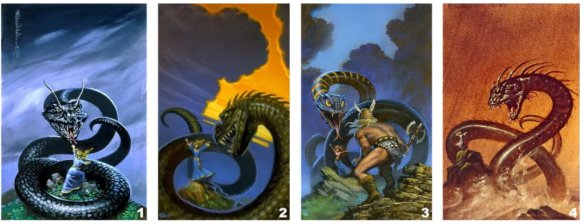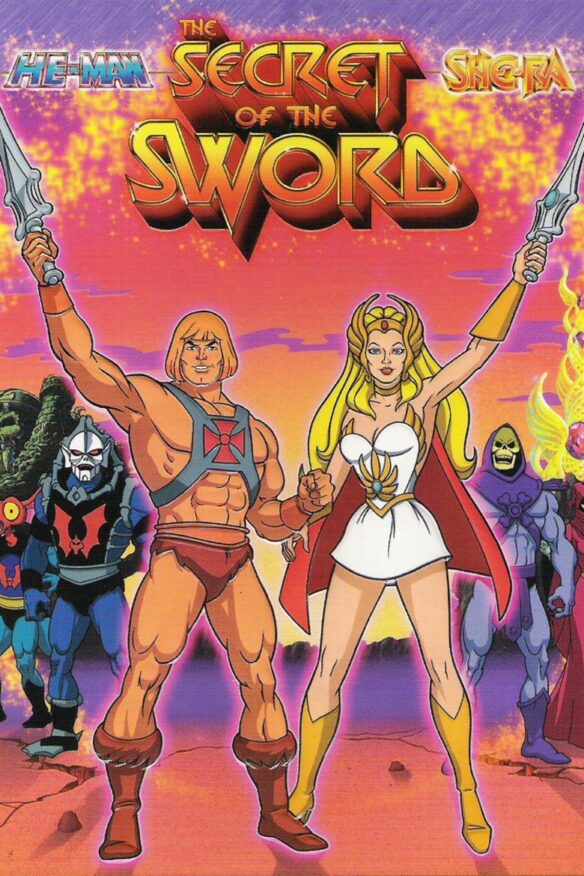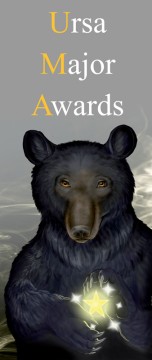(1) OVERSEAS VISITORS TO U.S. WARNED. “Some European countries and Canada issue advisories for travelers to the U.S.” – Minnesota Public Radio has the story.
Some European countries, as well as Canada, are warning their citizens who travel to the United States to strictly follow the country’s entry rules or risk detention as the Trump administration cracks down on immigration enforcement.
Denmark, the United Kingdom, Germany, Finland and Canada have revised their guidelines at a time when some travelers from these countries have been detained by immigration officials….
…The heightened advisories come after citizens from European countries have been detained and deported by immigration officials while traveling to the United States. Some of the warnings also note that the State Department has also suspended its policy allowing transgender, intersex and nonbinary people to update the sex field on their passports — eliminating the X marker as an option.
“We will enforce visa rules and other conditions of entry,” a State Department spokesperson told NPR on Saturday. “Prohibiting travel into the United States by those who might pose a threat or violate conditions of their visa is key to protecting the American people.”
On Friday, Germany’s Foreign Office adjusted its travel advisory after several of its citizens were reportedly arrested and detained by immigration authorities while entering the U.S., according to local media reports. The country is warning citizens that entering the U.S. through the Electronic System for Travel Authorization (ESTA) or a visa does not guarantee the right to enter the country.
The foreign office’s guidance says that, because U.S. border officials have the final authority to make decisions about whether someone can enter the country, there’s nothing that the German government can do to reverse a denial of entry. It recommends that travelers be able to provide proof of their return trip home, such as a plane ticket.
A German official on Saturday told NPR the country’s consulates general are aware of cases of citizens being detained and are in contact with their families as well as U.S. officials.
The United Kingdom is also warning its residents to comply with all entry rules or they “may be liable to arrest or detention.” The move comes after a tourist from the U.K. was reportedly arrested and detained by ICE at the U.S.-Canada border earlier this month.
Both Denmark and Finland have updated their travel guidance regarding people’s gender markers on their travel documents….
…On Friday, Canada also updated its travel guidelines for entering the U.S. Canadians and foreign nationals who visit the U.S. longer than 30 days “must be registered with the United States Government,” the government’s website warns — and that failure to comply could lead to “penalties, fines, and misdemeanor prosecution.”
(2) CANADIAN BOOKSELLERS CHALLENGE UNEXPECTED CONSEQUENCES. Publishers Weekly reports “Canadian Booksellers Unite in Tariff Fight”.
Canadian booksellers have joined forces to ask that Prime Minister Mark Carney exempt books from the 25% counter-tariffs scheduled to take effect on April 2 on $125 billion worth of goods imported from the U.S.
In an unusual collaboration, Laura Carter, executive director of the Canadian Independent Booksellers’ Association (CIBA), and Heather Reisman, CEO of chain bookseller Indigo Books & Music, sent a letter to the Prime Minister on March 20 urging the exclusion of books from the impending tariffs.
Carter and Reisman said in their letter that imposing tariffs on books would have “devastating consequences for Canadian readers, our businesses, and our cultural landscape,” reported the Quill & Quire.
The letter highlights a significant industry concern: that books by Canadian authors printed in and distributed through U.S. warehouses would be subject to the additional tariff, as the majority of books sold in Canada are published by Canadian divisions of multinational publishers.
“Unlike interchangeable consumer goods we know that readers will not likely substitute a book arriving via the U.S. for a Canadian printed and warehoused book,” Carter and Reisman said in the letter. “At this time there is nowhere near the capacity in Canada to handle all of our printing and warehousing. This tariff threatens the survival of bookstores and the livelihoods of thousands of Canadians.”…
(3) NNEDI OKORAFOR PROFILE. BBC Sounds makes available Outook’s feature on Nnedi Okorafor,“Making Marvel magic: The creative spark from my hospital bed”.

Nnedi Okorafor is an award-winning, Nigerian-American author of fantasy and science fiction.
Becoming a writer was not the most straightforward journey for Nnedi. Before her literary success she was a talented tennis player and dreamt of turning pro. However following a diagnosis of scoliosis, routine surgery to her spine left her temporarily paralysed.
Confined to her hospital bed, Nnedi found solace in her vivid imagination and began writing for the first time. It was the start of a highly successful career as an author and led to a request from Marvel to write some of their comics. Over the years she has written characters including Spiderman, the X-Men and the Avengers. Nnedi is also the first woman to write the character of T’Challa – the Black Panther, as well as his tech-loving sister, Shuri. Her latest book is called Death of the Author.
(4) CHALLENGER HISTORY RECOGNIZED. The National Book Critics Circle Awards were announced March 20. The complete list of honorees is at the link. The only work of genre interest is the nonfiction winner.
Adam Higginbotham won the nonfiction award for Challenger: A True Story of Heroism and Disaster on the Edge of Space. As committee chair Jo Livingstone stated, “Surprisingly propulsive in form and shocking in the facts it reveals, Challenger is a story of incompetence fostered when government agencies are invaded by corporate decision-makers.”
(5) THEY WERE EXPENDABLE. “Review: Mickey 17” from Camestros Felapton.
…While Timo manages to secure a nice position on the crew of the colony ship, Mickey fails to read the paperwork and ends up being the designated “Expendable”: a person who has elected to be digitised so that new copies of him can be printed out each time he dies. For various reasons (explained in the film), the ship is only allowed the one expendable and only one copy of Mickey at a time. Thus he ends up being a living crash test dummy/human Guinea pig for scientists on the ship. Each death and reprinting leads to a new number….
(6) EL-MOHTAR’S NEW BOOK. Dina praises “A Fairy Tale With Teeth: Amal El-Mohtar – The River Has Roots” at SFF Book Reviews.
…I loved everything about this little book. The plot itself – that of two sisters who stumbled into Faerie as children, but have come out again – was fast-moving and surprisingly exciting for such a short novella. The language was pure poetry, not just on a line by line basis, but also because it includes snippet of songs and actual poems. The beautiful etching illustrations are just the cherry on top of the gorgeous SFF novella sundae.
Perhaps most impressively was the way El-Mohtar managed to make her characters come to life….
(7) MYSTERY UNLOCHED. [Item by Steven French.] Here’s a fun piece on the various media appearances of the Loch Ness monster, prompted by a musical about to premiere in Scotland: “From The Simpsons to Werner Herzog: the coolest, craziest, scariest Nessies ever” in the Guardian.
It is the UK’s largest body of fresh water, its volume totalling more than all the lakes of England and Wales combined. It is also the UK’s greatest source of daft stories. For the best part of a century, Loch Ness has used its monster-adjacent status not only to finance a healthy tourist economy, but also to generate a small industry in Nessie-related fiction, from the inspired to the crackpot. The Simpsons sent Mr Burns to do battle with the creature in an episode called Monty Can’t Buy Me Love. From the pen of poet Ted Hughes came Nessie the Mannerless Monster, who was tired of being told she does not exist. And indie folkster Matilda Mann has a song called The Loch Ness Monster, containing this advice: “Stay right down there.” Not wanting to be left out, the Royal Mail has just honoured Nessie with a fine, if rather unscary, stamp.
To these slithery ranks we will shortly be able to add Nessie, a family musical written and composed by Glasgow’s Shonagh Murray and about to premiere in Edinburgh and Pitlochry. Murray was reluctant to tackle such a familiar Scottish icon, until a challenge from her father drew her in. “I had just finished doing a couple of shows about the women behind Robert Burns,” she says. “I was joking with my dad that I needed to find something a wee bit less Scottish. He was like: ‘Oh, there’s loads of Scottish stories that have been told – but not to their full potential. You should do a Nessie musical.’ On a dare, I wrote an opening number. The more I was writing, the more I liked it. There was something charming and special about it.”
I never met the monster, said the writer of The Secret of the Loch after her research, but I did find a wonderful whisky
Despite claims to the contrary, the story goes back no further than May 1933. That was when hotel proprietor Donaldina Mackay and her husband John, driving along the north shore of the loch, claimed to have seen a large creature on the surface. They said it resembled a whale and described it rolling for a minute before disappearing. Their testimony, reported by the Inverness Courier, set off a summer of sighting claims. At the time, the dinosaur-battling King Kong was becoming a monster hit in cinemas, but here was a fearsome creature on Scotland’s very own soil (or loch)….
(8) TODAY’S BIRTHDAY.
[Written by Mike Glyer.]
Born March 24, 1946 – Andrew Porter, 79. File 770’s indispensible Scroll contributor Andrew Porter got into sf fandom in the Sixties. He published a major genzine, Algol/Starship (1963–83), which received five Hugo nominations and won in 1974. And he has been a leading sf news writer for even longer — his first news-related column on upcoming paperbacks appeared in James V. Taurasi’s Science Fiction Times in 1960. Later in the decade he started his own newzine, S.F. Weekly (1966–68), and returned in the Eighties with Science Fiction Chronicle (1980–2002), a 21-time Hugo nominee and won in 1993 and 1994.

Porter was assistant editor on The Magazine of Fantasy & Science Fiction from 1966–74, and associate editor at Lancer Books in the late 1960s. Outside the sf field he also worked as a trade magazine editor and advertising production manager on such titles as Rudder, Quick Frozen Foods (under editor Sam Moskowitz), QFF International, Construction Equipment, and Electro-Procurement.
He has independently published nonfiction collections such as The Book of Ellison, Dreams Must Explain Themselves by Ursula K. Le Guin, Exploring Cordwainer Smith, and Experiment Perilous: The Art and Science of Anguish in Science Fiction and The Fiction of James Tiptree, Jr. by Gardner Dozois. He was honored with a Special British Fantasy Award in 1992.
He was Fan Guest of Honour at ConFiction, the 1990 World Science Fiction Convention held in The Hague, Netherlands. The audio of his speech is available at Fanac.org.
He also was recognized by Chicon V (1991) with a Special Committee Award for Distinguished Semiprozine Work. And he was honored with the Big Heart Award in 2009.
(9) MEMORY LANE.
[Written by Cat Eldridge.]
Rainbow Mars by Larry Niven (1999)
Twenty-six years ago Rainbow Mars was published by Tor. It is my absolutely favorite work by Larry Niven, with Ringworld being my second. After that, it’s the Gil the ARM stories. Because of what the stories are, it hasn’t been touched by the Suck Fairy at all.

It contains six stories, five previously published and the longest, “Rainbow Mars”, written for this collection, plus some other material. It is about Svetz, the cross-reality traveler who keeps encountering beings who really should not exist including those Martians. He travel back in time but it isn’t really time but alternative realties to retrieve animals as now in 3050 of them save dogs are extinct, but he never gets it right.
SPOILER HERE. Horses are unicorns, Gila monsters are, monsters of sort in the form of fire breathing dragons, and, well, guess, that bird? No a phoenix is certainly not a great idea, is it? END OF SPOILER, REALLY IT IS.
Now in the afterword, Niven notes, “Time travel is fantasy. But the only way to get fun out of it is to treat it as Analog–style science fiction. Keep it internally consistent. Lay out a set of rules and invite the reader to beat you to the consequences.” So these stories are to him SF, not fantasy.
The first story, “Get A Horse!” was first published in The Magazine of Fantasy and Science Fiction in October 1969. That was followed by “Bird in the Hand” in the same magazine, October of the next year. Surprisingly the third story, “Leviathan!” was published in Playboy in August of that year.
Yes, I know Playboy did a lot of SF, it’s just that I wouldn’t have expected this story to show up there. It fits F&SF better in my opinion. Your opinion on that matter of course may differ.
Then “There’s a Wolf in My Time Machine” was published in October of that year in the fine zine that printed the first two.
Finally the last story that got printed at that time, “Death in a Cage” was published in Niven’s The Flight of the Horse collection in September of 1973 which collected these stories as well. (The Flight of the Horse also had “Flash Crowd” which I like a lot and “What Good is a Glass Dagger?” which is fantastic.)
Now we get Rainbow Mars, the novel, yes novel as Tor insists it is, that finishes out this delightfully silly volume. I think it’s a novella but y’all can give me your opinion on that.
Some of Pratchett’s idea from a conversation he had with Niven remain in the final version of Rainbow Mars, mainly the use of Yggdrasil, the world tree. Though there’s Norsemen as well…
There’s two other two short pieces, “The Reference Director Speaks”, in which Niven speaks about his fictional sources for the Mars he creates, and “Svetz’s Time Line” which is self-explanatory.
An afterword, “Svetz and the Beanstalk”, rounds out the work in which Niven talks about the fictional sources for Rainbow Mars as a whole.
The fantastic cover art, which was nominated for a Chelsey Award, is by Bob Eggleton who has won, if my counting skills are right tonight, an impressive nine Hugos, mostly for Best Professional Artist though there was one for Best Related Work for his most excellent Greetings from Earth: The Art of Bob Eggleton.
I once, a long time ago, heard a pirated copy of the audiobook when the internet was a lot easier place to find such things. There were Zelazny novels there read by him. Sigh…
Postscript: We also recommend John Hertz’ “Interview with Hanville Svetz (Larry Niven, co-author)” first published in Argentus, 2004, and available in Dancing and Joking on page 34.
(10) COMICS SECTION.
- Dinosaur Comics deconstructs a riddle.
- Dog Eat Doug ventures into D&D.
- The Argyle Sweater has the talk.
(11) DON’T PANIC. “Netflix’s $275 Million ‘The Electric State’ Has Fallen Flat. No Matter?” The New York Times explains the reasons for the company’s sang froid. (Behind a paywall.)
Netflix spent over $275 million to make “The Electric State,” a sci-fi action adventure film starring Millie Bobby Brown, Chris Pratt and a slew of sentient robots. Had it opened in theaters, instead of on its service as it did on March 14, the film would almost certainly be declared a giant disappointment.
Reviews have been dismal. And though the movie debuted at No. 1 on the streaming giant’s weekly chart of most-watched movies, it had far fewer views (25.2 million) than other expensive features, including “The Gray Man” (41.2 million), which was made by the same directors, the brothers Joe and Anthony Russo.
But there was little hand-wringing inside Netflix this week. No marketing chief was blamed. No production executive packed up her office.
Instead, the movie demonstrates how different Netflix is from the traditional studios — and how easily the company can spend so much for a middling result without Wall Street’s noticing. (Its stock is up slightly this week.)
Truth is, no one piece of content moves the needle at Netflix in either direction. “Squid Game 2” was the most-watched title in the company’s most recent engagement report, with 87 million views, but it accounted for only 0.7 percent of total viewing. Rather, the $18 billion that the company spends each year on movies and shows is meant to reach a worldwide audience with different tastes and interests. The budget for “The Electric State” represents 1.5 percent of what the company will spend on content this year….
(12) KEY OBSERVATIONS. Olivia Waite opens the door to “Science Fiction, Locked Room Mysteries, and the Joy of Literary Games” at CrimeReads.
Let me be very obvious at the start and say: a murder victim can’t tell you who the killer is. Locked-room mysteries are puzzling because the only person you’re sure was in the room is the one person you can’t ask for testimony. That’s also what makes locked-room plots such challenging things to read or write — a baffling impossibility turns out to be an illusion with a material explanation. An airgun from the empty house across the street, a serpent in the ventilator, a disguise or an accomplice or a clock hand nudged to display a fraudulent time.
Chandler famously objected to how this makes murder into something like a game — and he’s not wrong, ethically or aesthetically — but he does overlook the crucial fact that games are extremely fun. And my god do we need whatever fun we can scrape from these times….
… The great rebellious joy of sci-fi is that it rewrites the rules of our universe: faster than light travel, sentient mechanical beings, aliens and wormholes and alternative timelines and mirror universes and all. You must only touch the ball with your hands becomes you must never touch the ball with your hands. You transform a fact so you can explore the consequences — the propulsive and then what? that keeps the fictional pages turning. Humans colonize Mars — and then what? Robots can have feelings — and then what?
A corpse can tell you who killed them — and then what?…
(13) STOP THEM SCRAPERS! [Item by Mark Roth-Whitworth.] All the “by clicking on this, you accept our terms”… ever want to set your terms (my son’s working out such a “by my use of your software, you you agree…”)? Well, here’s an IEEE proposed standard for it. “Doc Searls Proposes We Set Our Own Terms and Policies for Web Site Tracking” at Slashdot.
…Basically your web browser proffers whatever agreement you’ve chosen (from a canonical list hosted at Customer Commons) to the web sites and other online services that you’re visiting.
“Browser makers can build something into their product, or any developer can make a browser add-on or extension…” Searls writes. “On the site’s side — the second-party side — CMS makers can build something in, or any developer can make a plug-in (WordPress) or a module (Drupal). Mobile app toolmakers can also come up with something (or many things)…”MyTerms creates a new regime for privacy: one based on contract. With each MyTerm you are the first party. Not the website, the service, or the app maker. They are the second party. And terms can be friendly. For example, a prototype term called NoStalking says “Just show me ads not based on tracking me.” This is good for you, because you don’t get tracked, and good for the site because it leaves open the advertising option. NoStalking lives at Customer Commons, much as personal copyrights live at Creative Commons. (Yes, the former is modeled on the latter.)…
(14) SUNK COST. Adam Rowe discusses depictions of “Atlantis” at 70s Sci-Fi Art.
Much like the Bermuda triangle, Bigfoot, and the psychic powers of plants, serious discussions of Atlantis seem to have dwindled down to nothing since the ’70s and ’80s. But maybe it would be more fair to say that they’ve gotten less fun because, much like any other conspiracy theory, belief in Atlantis is now an on-ramp to harmful views like climate change denial or white supremacy….
… Now that I’ve gotten all the sensible opinions out at the front of this post, I have to admit that I really enjoy all this pseudo-historical nonsense. I devoted a whole chapter of my sci-fi art book to cryptozoology and the paranormal – while it was clearly distinct from science fiction, it was a thriving genre with plenty of crossover, including many big-name artists….
Here’s an example by David Hardy.

(15) ANDOR. Disney+ has dropped a trailer for the final season of Andor, which begins streaming on April 22.
[Thanks to Chris Barkley, Cat Eldridge, SF Concatenation’s Jonathan Cowie, John Hertz, Mark Roth-Whitworth, Steven French, Kathy Sullivan, Teddy Harvia, Mike Kennedy, Andrew Porter, and John King Tarpinian for some of these stories. Title credit belongs to File 770 contributing editor of the day Andrew (not Werdna).]





















